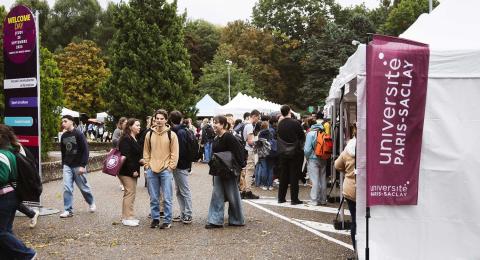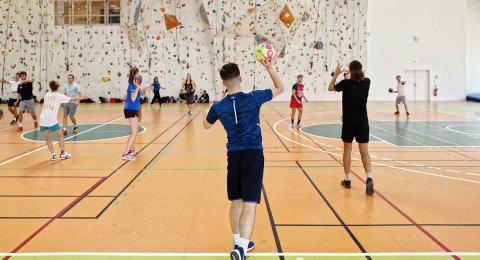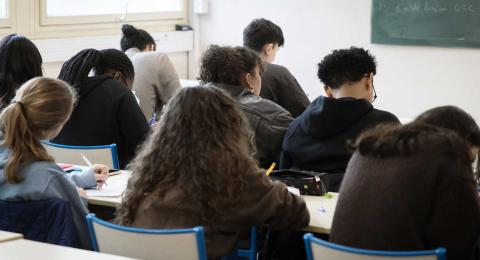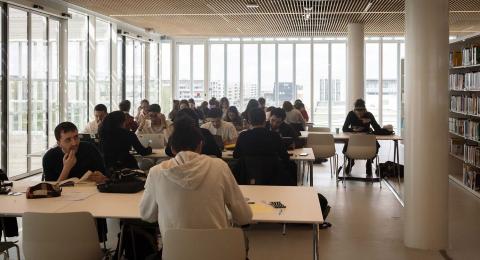Human Movement & Sport Sciences : Engineering and Ergonomics
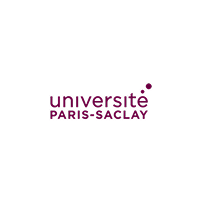

This master's program trains experts in human movement analysis, combining physical ergonomics, biomechanics, data science, robotics, and cognitive sciences. Students deepen their knowledge in musculoskeletal modeling, AI applied to movement, and human-machine interaction, blending scientific methodology with technological projects. The program includes numerous practical sessions (measurement, programming, etc.), internships, specialized conferences, and courses in project management.
The master’s program covers data science (statistics, machine learning, visualization), movement analysis (3D biomechanics, sensors, musculoskeletal modeling), physical engineering (mathematics, mechanics, robotics), scientific methodology, and cognitive sciences (AI, psychophysics), with programming as a transversal skill.
In the first year, students gain solid foundations through practical projects. In the second year, the program specializes in physical ergonomics, assistive robotics, human-machine interaction, AI for movement, and systems approach. The second semester is dedicated to an extended internship in a lab or company (health, sports, R&D, etc.). The program also includes modules in project management, innovation, and entrepreneurship, complemented by immersive experiences: practical work (measurements, programming), hackathons, interdisciplinary conferences, and collaborative projects.
Informations
Learning outcome targets
The Master’s program in STAPS – Engineering and Ergonomics of Physical Activity (IEAP) at Université Paris-Saclay trains professionals at the intersection of human movement science, engineering, and data science. It is built around a single track, Engineering, Data Science, and Human Movement (IDSMH), open to students from STAPS, fundamental sciences, and engineering backgrounds, as well as engineering students in a dual-degree program.
The curriculum develops a dual expertise in engineering and data science applied to human movement, addressing the growing needs in assistive robotics, human-machine interaction, and movement analysis across professional, sports, and healthcare contexts. The goal is to design human-centered technological systems capable of measuring, modeling, and analyzing both healthy and pathological movement.
The curriculum covers a broad spectrum, including data science (statistics, machine learning, data visualization), human movement analysis (3D biomechanics, sensors, musculoskeletal modeling), physical engineering (mathematics, mechanics, robotics), scientific methodology, and cognitive sciences (AI, psychophysics). Programming, a transversal skill, is applied across all these fields.
In the first year (M1), students acquire strong foundational knowledge, applied through hands-on projects (technical reports, technological projects, internship). In the second year (M2), the program offers specialization in physical ergonomics, assistive robotics, human-machine interaction, AI for movement, and system-based approaches. The second semester is fully dedicated to a long-term internship, either in a research lab or in industry (health, sports, R&D, etc.).
The training also includes modules on project management, innovation, and entrepreneurship, reinforced through immersive experiences such as practical labs (measurement, programming), hackathons, interdisciplinary conferences, and collaborative projects.
Career opportunities include human movement analysis, physical ergonomics (occupational health, workplace design), sports performance, R&D in human-machine interaction, robotics, and data science applied to human behavior. Graduates go on to work as R&D engineers, data scientists, research officers, ergonomists, technical sales engineers, or pursue PhDs (CIFRE fellowships or ministerial contracts).
Target audience
This Master's program is open to students from STAPS Bachelor's degrees, the dual-degree STAPS-SPI Bachelor's from Université Paris-Saclay, as well as from Bachelor's programs in Science and Engineering. It is also offered as a dual-degree option for engineering students.
As part of the selection process for entry into the first year of the Master's program (in accordance with the law of 23/12/2016) and subject to capacity limits, applicants must have completed a Bachelor's degree in one of the following fields: STAPS APA\&S, STAPS Sport Training, STAPS Engineering and Ergonomics of Physical Activity, Life Sciences, Science and Technology, Mathematics, Biology & Health, or Physical Engineering. The program also welcomes students or professionals from paramedical fields (Physiotherapy, Occupational Therapy, Ergonomics, Osteopathy, Podiatry, Medicine, Nursing, etc.). Other backgrounds may be considered upon review of the application, especially for international degrees. For students in initial training, particular attention will be paid to final grades in scientific subjects. Academic results should be consistent with at least "Honours" (equivalent to Assez bien to Très bien) in the third year of the Bachelor's degree.
Due to the multidisciplinary nature of the Master's program, students will be introduced to new academic content that may not be part of their original training. For instance, students from STAPS, Biology, Cognitive Sciences, or Ergonomics will be introduced to engineering and data sciences (including some mathematics), while those from Engineering, Mathematics, or Physics will learn about human movement sciences. Therefore, applicants must demonstrate strong motivation to invest in the program and acquire knowledge and skills in new scientific and technological fields.


